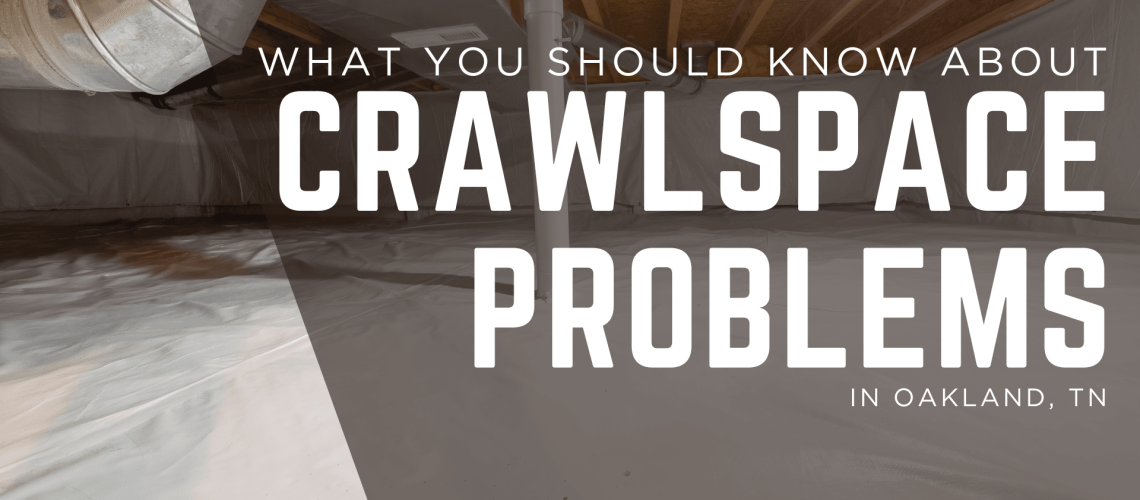When most homebuyers think about what’s under their feet, they picture solid floors and sturdy foundations. But beneath many homes in Oakland, Tennessee, lies a space that’s often ignored — the crawl space.
It’s dark, damp, and out of sight — but it’s also one of the most critical parts of your home. The crawl space supports your structure, houses plumbing and electrical systems, and directly affects indoor air quality. Unfortunately, it’s also one of the most common areas where I find major defects during home inspections in Fayette County.
If you’re buying a home with a crawl space, here’s what you should know before you make it official.
Why Crawl Spaces Matter
A crawl space isn’t just an empty void — it’s part of your home’s environment. Air moves up from the crawl space into the living areas through a process called the stack effect. That means anything happening below — moisture, mold, or pest activity — can eventually affect the air you breathe upstairs.
In Fayette County, the combination of humid summers, clay-based soils, and seasonal rainfall makes crawlspaces especially vulnerable. A damp or neglected crawl space can lead to mold growth, wood decay, structural shifting, and even foundation movement.
Common Crawl Space Problems Found in Oakland Homes
1. Excessive Moisture and High Humidity
The number one issue I see in West Tennessee crawl spaces is moisture. Sometimes it’s from plumbing leaks; other times it’s from condensation or poor grading around the home. High humidity creates a perfect environment for wood rot, fungal growth, and termites.
You’ll often see rusted fasteners, dark stains on floor joists, or insulation falling down — all signs that humidity is too high.
2. Standing Water and Poor Drainage
During inspections in Oakland and Somerville, it’s common to find standing water in crawlspaces after heavy rain. This often results from poor yard grading, missing gutters, or improper downspout discharge. Over time, standing water can erode footings and lead to settlement cracks.
Proper exterior grading, downspout extensions, and sometimes a sump pump or perimeter drain can make a world of difference.
3. Missing or Damaged Vapor Barriers
A vapor barrier (usually a sheet of plastic covering the soil) helps prevent ground moisture from evaporating into the crawl space. Many older homes either lack this barrier or have one that’s torn or incomplete.
Without a good vapor barrier, humidity levels climb and condensation forms on wood and ductwork — a common issue in humid Fayette County summers.
4. Mold and Fungal Growth on Wood Framing
Dark discoloration on joists or subflooring often indicates fungal growth from prolonged moisture. Even if it’s inactive, it points to a past moisture problem that needs to be addressed. In some cases, air testing or mold sampling can confirm whether the spores are active and airborne.
5. Insulation Problems
Crawl space insulation tends to sag or fall over time, especially when it absorbs moisture. Wet insulation loses effectiveness and traps humidity against the floor framing. The result: cold floors in winter and high energy bills year-round.
6. Pest Activity
Crawl spaces attract rodents, termites, and other pests seeking shelter or moisture. During inspections, I look for droppings, chewed insulation, or damaged wood near sill plates. Termite activity is a particular concern in this region and may require treatment.
The Health and Safety Connection
Crawl space issues don’t just damage wood — they affect your entire home environment. Excess moisture can lead to:
- Mold spores circulating through the HVAC system
- Musty odors or allergy symptoms indoors
- Uneven or sagging floors
- Increased utility costs from damp insulation
Over time, structural beams may even begin to weaken, compromising floor stability.
How to Protect Your Home’s Crawl Space
Preventing crawl space problems starts with controlling moisture and ventilation:
- Make sure gutters and downspouts drain at least 6 feet away from the foundation.
- Keep grading sloped away from the home.
- Inspect vapor barriers annually and replace damaged sections.
- Consider a dehumidifier or encapsulation system if humidity remains high.
- Check plumbing and HVAC lines for leaks.
For existing homes, a professional crawl space inspection can identify issues before they become major repairs.
What I Look for During a Crawl Space Inspection
When inspecting a home in Oakland or anywhere in Fayette County, I:
- Evaluate moisture levels and look for signs of standing water.
- Examine floor joists, beams, and sill plates for wood decay.
- Check insulation, vapor barriers, and ventilation.
- Test for high humidity or visible fungal growth.
- Identify plumbing or drainage issues contributing to water intrusion.
Each issue is clearly documented in your report, with photos and specific recommendations for correction.
The Bottom Line
The crawl space might be out of sight, but it should never be out of mind. For many homeowners in Oakland, TN, it’s the source of hidden issues that can affect everything from indoor air quality to structural stability.
A thorough crawl space inspection helps you make an informed decision — and keeps your investment safe for years to come.
📞 Schedule Your Oakland Home Inspection Today
Serving Oakland, Somerville, Moscow, and communities across Fayette County, Upchurch Inspection provides certified home inspections, crawl space evaluations, and specialized testing for mold, radon, water quality, and sewer systems.
📞 Call (901) 350-8885 or visit UpchurchInspection.com to schedule your inspection today.


